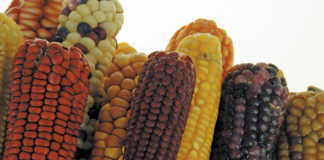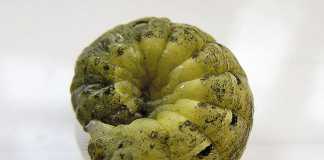
South Africa has no indigenous cacti, although some of our local succulents resemble members of the Cactaceae family. Most of our cacti were introduced from South America in the early 1900s. Fortunately, most species are not invasive aliens because they need controlled conditions to germinate and survive. Those that do invade, however, cause great damage to the veld.
Once they have taken hold in an area, they are extremely difficult and expensive to control, let alone eradicate. Prickly pear, queen of the night, torch cactus and jointed cactus are all familiar to farmers. A lesser known cactus weed is the imbricate cactus (Cylindropuntia imbricata), or devil’s rope pear. It’s an aggressive invader that often goes unnoticed in tall vegetation on river banks or hills. But it can grow quite rapidly into impenetrable thickets, with some plants reaching up to 4m in height.
Its spiky joints cling to the coats of passing game, dropping off when the animals clear a fence. This helps to spread the weed.
Hand-spray with chemical
A host-specific cochineal, imported from Australia in 1970, is reasonably successful at controlling imbricate cactus, but the best method of control is hand-spraying with monosodium methyl arsenate (MSMA). It is registered for the purpose and costs about R120/l. Dilute the chemical with water (1:20) and spray over the entire plant until it is thoroughly wet.
For bigger plants, use a slasher to cut through the bark of the stems near the base and spot-treat the wound with the spray.
For well-established trees, drill a hole in the stem and fill with a 1:1 solution using a syringe or drenching gun. Plants treated in this way should start dying within two weeks, but need follow-up treatment if some of the joints show signs of revival.
Cochineal biological agent
Very young plants can be controlled quite successfully by inoculating them with joints infected with the right type of cochineal. A starter supply can be obtained from the ARC. To infect clean cacti with cochineal, simply place one or two of the infected joints among the branches of the plant. The insect will spread to the rest of the plant and, eventually, to other cacti in the immediate area.
The cochineal can badly damage big imbricate trees too, but these should then be felled to prevent re-growth – no easy task.
Control strategy
The ARC recommends the following control strategy for imbricate cactus, keeping in mind that biological control can reduce the amount of chemical control needed by 50%:
- Small cactus plants: Biological control only.
- Large plants in dense infestations: Biological control using cochineal for two years, then hand-fell any trees still living.
- Isolated plants: Chemical control
- Wet areas: Integrate chemical and biological control, relying on biological control in dry periods and chemical control during wet periods.
Importance of breeding colony
MSMA does not kill the cochineal insects, but by killing the trees, it reduces the number of host plants for the insects to survive on. You should therefore keep a few imbricate cactus plants in an isolated area for the sole purpose of breeding a reserve colony of cochineal for later use.
The cochineal insects kill the host plant by sucking the sap from the succulent stems and joints. The tiny nymphs, called crawlers, move around the plant, soon covering it in white, waxy spots. The female insects are dispersed by wind, landing on neighbouring plants to breed.
For more information, phone the ARC Plant Protection Research Institute at 012 329 3269.













